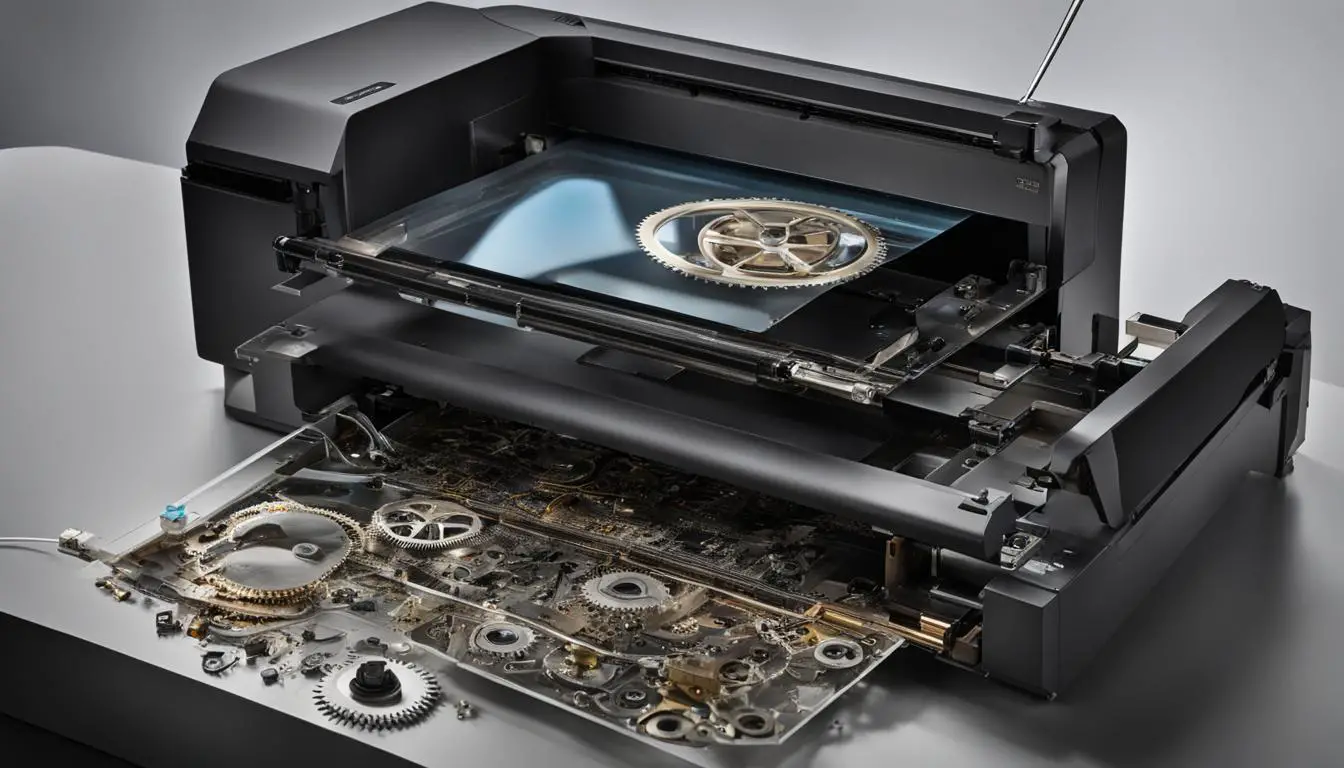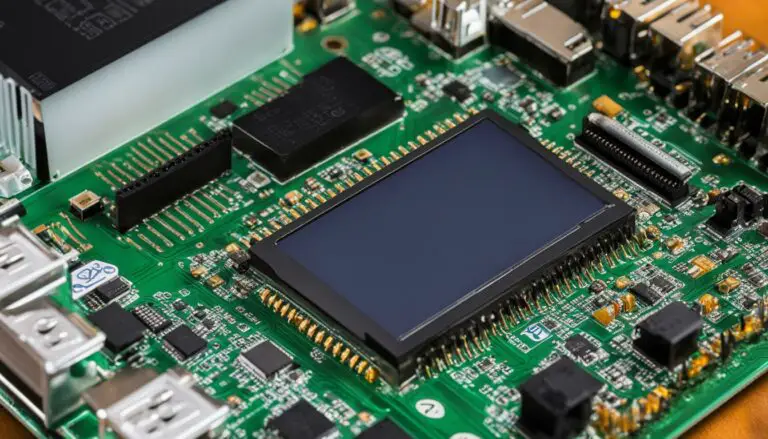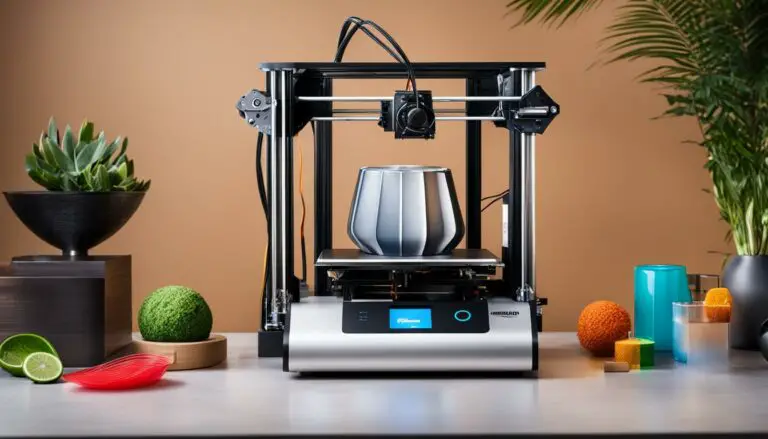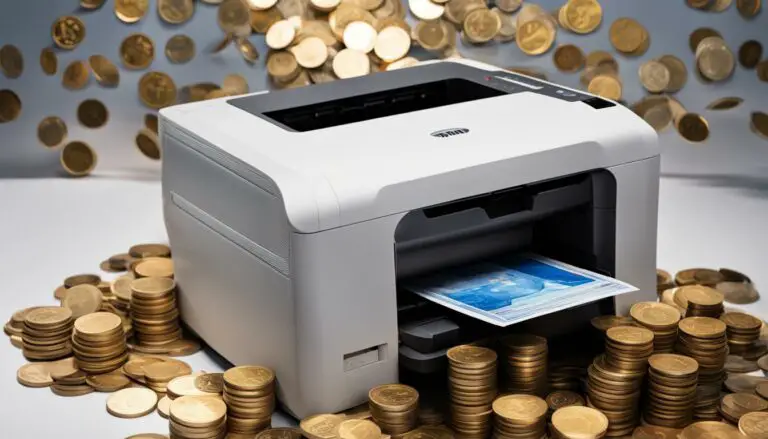Solving the Mystery: Why My Printer Won’t Print | Expert Guide
Originally posted on November 13, 2023 @ 9:53 am
Encountering problems with printing? This all-inclusive guide is designed to offer remedies for typical printer issues that hinder its printing function. From paper jams to connectivity problems, this article will assist you in resolving them efficiently and promptly.
Key Takeaways:
- Identifying the common reasons for printer malfunctions can help in finding the appropriate solution.
- Paper jams, low ink levels, outdated drivers, and connectivity issues are some common causes of printers not printing.
- Troubleshooting steps include checking for paper jams, updating printer drivers, fixing Wi-Fi connectivity issues, and restarting the printer.
- If basic troubleshooting steps don’t resolve the issue, checking cables or Wi-Fi connections and addressing low ink warnings may be necessary.
- Consider seeking professional help or considering a new printer if the problem persists or if specific issues like black ink not printing occur.
Common Reasons Your Printer Won’t Print
When your printer refuses to print, it can be frustrating and disruptive. To effectively troubleshoot the problem, it’s crucial to identify the common reasons behind this issue. Understanding these causes will help you find the appropriate solution and get your printer back up and running.
One of the most common reasons printers won’t print is outdated drivers. Printer drivers act as a bridge between your computer and the printer, and if they are not up to date, compatibility issues may arise. Additionally, paper jams can also prevent your printer from printing. This can occur due to incorrect paper loading, damaged rollers, or debris in the printing path.
Low ink levels can also be a culprit. When your ink cartridges are running low, the printer may refuse to print until they are replaced. Connectivity issues, such as unstable Wi-Fi or a faulty USB cable, can disrupt the communication between your computer and the printer, resulting in print failures.
Corrupted print jobs and hardware malfunctions are other potential causes. If a print job gets corrupted during the printing process, it can cause errors and prevent the printer from completing the task. Hardware malfunctions, such as a faulty printhead or sensors, can also hinder the printing process.
Table: Common Reasons Your Printer Won’t Print
| Reason | Description |
|---|---|
| Outdated Drivers | Compatibility issues due to outdated printer drivers |
| Paper Jams | Incorrect paper loading, damaged rollers, or debris in the printing path |
| Low Ink Levels | Printer refuses to print until ink cartridges are replaced |
| Connectivity Issues | Unstable Wi-Fi or faulty USB cable disrupts communication |
| Corrupted Print Jobs | Errors caused by print jobs getting corrupted |
| Hardware Malfunctions | Faulty printhead, sensors, or other hardware issues |
Troubleshooting Paper Jams and Ghost Jams
When it comes to printer issues, nothing is more frustrating than encountering paper jams or ghost jams. These problems can disrupt your printing tasks and leave you feeling helpless. However, understanding the common causes behind these jams and knowing how to troubleshoot them can help get your printer back on track.
One of the main culprits behind paper jams is poor paper quality. Using low-quality or damaged paper can easily lead to jams as the printer’s rollers struggle to grip the paper properly. Additionally, a misaligned paper tray can also cause paper to get stuck, preventing smooth feeding into the printer. Lastly, worn-out printer rollers can lose their grip over time, resulting in paper jams. It’s essential to address these issues to ensure smooth printing operations.
| Common Causes of Paper Jams | Troubleshooting Steps |
|---|---|
| Poor paper quality | Use high-quality, undamaged paper and avoid using paper that is too thick or too thin for your printer’s specifications. |
| Misaligned paper tray | Check the alignment of the paper tray and adjust it if necessary. Make sure the paper is properly aligned against the guides. |
| Worn-out printer rollers | Clean or replace the printer rollers if they are worn-out. Consult your printer’s manual for specific instructions. |
Ghost jams, on the other hand, occur when the printer detects a jam even though there is no actual paper jammed. This can be caused by sensors that are too sensitive or malfunctioning, misaligned components, or debris inside the printer. To troubleshoot ghost jams, it’s important to inspect the paper path thoroughly, ensuring there are no obstructions or foreign objects that may trigger false jam detection.
In summary, troubleshooting paper jams and ghost jams requires addressing poor paper quality, checking the alignment of the paper tray, and cleaning or replacing worn-out printer rollers. Additionally, inspecting the paper path and removing any debris is crucial for resolving ghost jams. By following these troubleshooting steps, you can overcome these frustrating printer issues and resume your printing tasks smoothly.
Resolving Printer Driver Problems
Printer driver problems can be a major hurdle when it comes to getting your printer to print. Outdated drivers, corrupt files, and incorrect installations can all contribute to issues with your printer’s functionality. It’s essential to address these problems to ensure smooth printing operations.
The first step in resolving printer driver problems is to check for outdated drivers. Manufacturers regularly release updates to improve performance, compatibility, and bug fixes. Visit the manufacturer’s website or use their dedicated software to download and install the latest drivers for your printer model. Upgrading to the latest drivers can often solve various issues and ensure optimal printer performance.
If you’re still experiencing issues even with updated drivers, it’s possible that there are corrupt files in the driver installation. To address this, you can reinstall the printer driver. First, remove the existing driver from your computer and then download the latest version from the manufacturer’s website. Follow the installation instructions carefully to ensure a clean and complete installation.
Incorrect installation of printer drivers can also hinder printing functionality. Ensure that you follow the manufacturer’s instructions precisely when installing the driver. This includes connecting the printer to the computer at the correct time during the installation process and selecting the appropriate driver for your operating system. Double-checking these installation steps can help resolve any issues caused by incorrect driver installation.
If you’ve followed these steps and are still experiencing printer driver problems, it may be helpful to reach out to the manufacturer’s support team for assistance. They can provide specific troubleshooting steps tailored to your printer model and help you resolve any persistent issues.
| Common Printer Driver Problems | Solutions |
|---|---|
| Outdated drivers | Download and install the latest drivers from the manufacturer’s website. |
| Corrupt files | Reinstall the printer driver after removing the existing driver. |
| Incorrect installation | Follow the manufacturer’s instructions precisely during driver installation. |
Fixing Wi-Fi Connectivity Issues
When your printer won’t print due to Wi-Fi connectivity issues, it can be frustrating. However, there are several common causes and solutions to help you resolve these problems and get your printer back online.
Weak Signal
A weak Wi-Fi signal can lead to connectivity issues with your printer. To improve the signal strength, consider moving your printer closer to your wireless router. By reducing the distance between the printer and the router, you can ensure a stronger and more stable connection.
Network Congestion
If you’re experiencing network congestion, it can affect your printer’s ability to connect to the Wi-Fi network. This often occurs when multiple devices are connected and using the network simultaneously, causing a slowdown. To overcome this, try disconnecting unnecessary devices or limiting the number of devices connected to the network while printing.
Outdated Firmware
Outdated printer firmware can also cause Wi-Fi connectivity issues. It’s important to regularly check for firmware updates provided by the printer manufacturer. Upgrading the firmware can help address compatibility issues and improve the overall performance of your printer’s wireless connection.
Incorrect Settings
Incorrect Wi-Fi settings can prevent your printer from connecting to the network. You should ensure that the printer is connected to the correct Wi-Fi network and that the password is entered correctly. Additionally, check the printer’s network settings to ensure they are configured properly for your home or office network.
By addressing these Wi-Fi connectivity issues, you can successfully resolve problems that prevent your printer from printing wirelessly. Remember to consult your printer manual for specific troubleshooting steps tailored to your printer model.
| Wi-Fi Connectivity Issues | Causes | Solutions |
|---|---|---|
| Weak Signal | A weak Wi-Fi signal | Move the printer closer to the router to improve signal strength |
| Network Congestion | Multiple devices using the network simultaneously | Disconnect unnecessary devices or limit the number of connected devices |
| Outdated Firmware | Printer firmware is not up to date | Check for firmware updates and upgrade to the latest version |
| Incorrect Settings | Incorrect Wi-Fi network or password settings | Ensure the printer is connected to the correct network and verify the password |
Basic Troubleshooting Steps for Printers That Won’t Print
If you’re facing the frustrating issue of your printer not printing, there are some basic troubleshooting steps you can take to address the problem. Before diving into more complex solutions, it’s important to check a few key areas to ensure everything is in working order. By following these steps, you can potentially resolve common issues and get your printer up and running again.
Check Printer Connection
The first step is to ensure that your printer is properly connected to your computer or network. Verify that all cables are securely plugged in and that there are no loose connections. If you’re using a wireless printer, make sure it is connected to the correct Wi-Fi network and that the signal is strong and stable. In some cases, simply re-establishing the printer connection can resolve the issue.
Verify Ink Levels
Low ink levels can also cause printing problems. Check the ink or toner levels on your printer to ensure they are sufficient for the print job. If the ink levels are low, replace the cartridges with fresh ones. It’s important to use compatible cartridges that are specifically designed for your printer model to ensure optimal performance.
Update Printer Driver
An outdated or incompatible printer driver can prevent your printer from functioning properly. Check the manufacturer’s website for the latest driver updates for your printer model. Download and install the updated driver to ensure compatibility with your operating system and to fix any known issues. Updating the printer driver is often a simple yet effective solution for printing problems.
Verify Print Spooler Service
The print spooler service is responsible for managing print jobs in the print queue. If the print spooler service is not running or is experiencing issues, it can prevent your printer from printing. To verify the status of the print spooler service, go to the Services section in your computer’s settings. Ensure that the print spooler service is set to “Automatic” and is running. Restarting the print spooler service can also help resolve any temporary glitches.
| Basic Troubleshooting Steps | Description |
|---|---|
| Check Printer Connection | Ensure proper cable or Wi-Fi connection |
| Verify Ink Levels | Check and replace low ink cartridges |
| Update Printer Driver | Download and install updated printer driver |
| Verify Print Spooler Service | Check the status and restart the print spooler service |
The Power of Restarting Your Printer
When your printer is not cooperating and refuses to print, there’s a simple troubleshooting step that can often work wonders: restarting your printer. This straightforward solution can help resolve a variety of issues, from pesky software glitches to frustrating connectivity problems.
Restarting your printer is akin to giving it a fresh start. By unplugging the printer from the power source, waiting for a short period, and then plugging it back in, you allow the printer to reset itself and clear any error states that may be hindering its operation.
Software glitches can occasionally occur in printers, causing them to become unresponsive. Restarting the printer can help resolve these glitches and restore normal functionality. Additionally, if you’re experiencing connectivity problems, restarting your printer can help establish a fresh connection with your computer or network, resolving any temporary issues that may be affecting communication between devices.
Remember, restarting your printer is a simple yet effective troubleshooting step that should be tried before diving into more complex solutions. It’s always worth giving this method a shot, as it may save you time and frustration.
“Restarting your printer is like pressing the reset button on a misbehaving device. It can often fix the problem without any lengthy troubleshooting or technical expertise.”
Checking Cables or Wi-Fi Connections
If restarting your printer didn’t resolve the issue, it’s time to check the cables or Wi-Fi connections. A printer that is not responding could be due to a physical disconnection or an unstable network connection. Ensure that all cables are securely connected to both the printer and the computer. Check for any loose or damaged cables that could be affecting the connection.
If you are using a wireless printer, verify that your Wi-Fi network is stable. Weak or intermittent Wi-Fi signals can hinder communication between your computer and the printer. Consider moving your printer closer to the router to improve signal strength. Additionally, check your network settings to confirm that your printer is connected to the correct network and that there are no conflicting settings that could be causing the issue.
By double-checking the printer cables and Wi-Fi connections, you can identify and resolve any connectivity problems that may be causing your printer not to respond. Ensuring a reliable connection is essential for proper communication and functionality between the printer and your computer.
Reasons for Low Ink Warnings and Solutions
Low ink warnings can be frustrating, especially when you’ve recently replaced the ink cartridges. There are a few possible reasons why you might continue to see these warnings even with new cartridges. Let’s explore some common causes and their solutions.
1. Ink Cartridge Replacement
One reason for low ink warnings could be that the new cartridges you’ve installed are not recognized by your printer. This can happen if the cartridges are not compatible or if they were not installed correctly. Ensure that you are using genuine cartridges recommended for your printer model and follow the manufacturer’s instructions for installation. If the warnings persist, try removing and reinserting the cartridges to establish a proper connection.
2. Clogged Vents
Over time, the vents on your ink cartridges can become clogged with dried ink, which may interfere with the proper flow of ink and trigger low ink warnings. To check for clogged vents, remove the cartridges and inspect them. If you see any blockages, gently clean the vents with a lint-free cloth dampened with distilled water. Be sure to let the cartridges dry completely before reinstalling them.
3. Compatible Cartridges
If you’re using compatible or third-party cartridges, low ink warnings may be more common. These cartridges often have different chipsets or may not provide accurate ink level information to your printer. While they can be a cost-saving option, it’s important to understand that compatibility issues may arise. Consider switching to genuine cartridges to avoid these warnings or consult the cartridge manufacturer for any available firmware updates or troubleshooting tips.
| Issue | Solution |
|---|---|
| Ink cartridge replacement not recognized | Ensure genuine cartridges are used and installed correctly. |
| Clogged vents | Inspect cartridges for blockages and clean with distilled water if necessary. |
| Compatible cartridges | Consider switching to genuine cartridges or consult the cartridge manufacturer for support. |
By addressing these common causes of low ink warnings, you can potentially resolve the issue and continue printing without interruptions. Remember to follow the manufacturer’s recommendations for ink cartridge replacement and maintenance to ensure optimal performance from your printer.
Conclusion
Troubleshooting printer issues can be frustrating, but with the right solutions, most problems can be resolved. By following the troubleshooting steps outlined in this guide, you can address common issues such as paper jams, driver problems, connectivity issues, and low ink warnings.
However, if you find that your printer is still not printing, especially when it comes to black ink, it may be a sign that it’s time to consider purchasing a new printer. Some printers may encounter hardware malfunctions that cannot be easily fixed, making it more practical and cost-effective to invest in a new device.
Before disposing of your old printer, make sure to recycle it properly. Many manufacturers and retailers offer recycling programs to help reduce electronic waste. By responsibly disposing of your old printer, you can contribute to a cleaner and more sustainable environment.
FAQ
Why won’t my printer print?
There are several common reasons why a printer may not print, including outdated drivers, paper jams, low ink levels, connectivity issues, corrupted print jobs, and hardware malfunctions. Identifying the specific cause can help find the appropriate solution.
How do I fix a paper jam in my printer?
To fix a paper jam, check the paper path, make sure the paper tray is aligned properly, and clean or replace worn-out printer rollers if necessary.
What should I do if my printer driver is causing problems?
If you’re experiencing printer driver problems, try updating the drivers, reinstalling them if needed, and checking for manufacturer updates. Keeping your printer drivers up to date is important for proper functionality.
What can I do if my printer won’t connect to Wi-Fi?
If your printer is having Wi-Fi connectivity issues, try moving it closer to the router, checking network settings, updating firmware, and consulting the printer manual for specific troubleshooting steps.
What basic troubleshooting steps can I take for a printer that won’t print?
Before diving into more complex solutions, try checking the printer connection, setting the printer as the default device, updating the printer driver, verifying the print spooler service, and clearing any stuck print jobs.
How can restarting my printer help resolve issues?
Restarting your printer can often solve various issues, such as software glitches and connectivity problems. By giving it a fresh start, you clear any error states that may be hindering its functionality.
What should I check if my printer is not responding?
If your printer is not responding, check the printer cables to ensure they are securely connected. Also, verify that the Wi-Fi network is stable, as physical disconnections or unstable networks may be the underlying cause.
How do I resolve low ink warnings?
To address low ink warnings, try replacing low ink cartridges, checking for clogged vents, and cleaning them if necessary. You can also consider using compatible cartridges as an alternative.
What should I do if these troubleshooting steps don’t solve the issue?
If the problem persists or you’re experiencing specific issues, such as black ink not printing, it may be time to consider purchasing a new printer. Remember to recycle your old printer properly.







